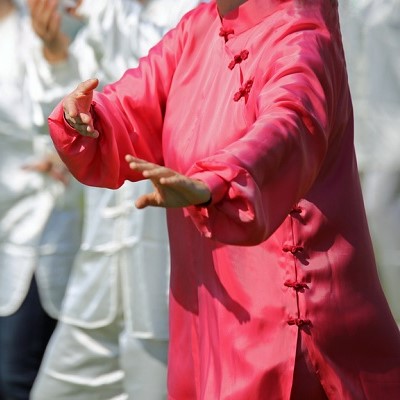Tai Chi for Seniors
 There are conflicting ideas about the origin of tai chi. That should be expected, as the modern-day Chinese form of exercise and physical fitness originated more than 700 years ago as a martial art.
There are conflicting ideas about the origin of tai chi. That should be expected, as the modern-day Chinese form of exercise and physical fitness originated more than 700 years ago as a martial art.
However, it is generally accepted that Shao-Lin martial art practitioner Chang San-feng “founded” Tai Chi Chuan (what Westerners called tai chi) in the mid-13th century.
The story is a good one.
Born in 1247 (disputed), Chang San-feng was a brilliant child. He had an incredible memory and very high intelligence level, and was a vigilant student and observer. After the death of his parents, he returned home and began studying the Buddhist martial art Shao-Lin. During this time he was living in the Wu Tang mountains, and was drawn outside to his front door one day by a peculiar sound. Continue reading
 Tai chi is often called an energy art. This is because it centers around the unseen energies which makes up your life force.
Tai chi is often called an energy art. This is because it centers around the unseen energies which makes up your life force.
There are 13 elemental positions often referred to as postures which are at the base of all tai chi practice.
Those 13 “postures” include 8 separate but linked energy forces and 5 different types of movements or steps (directions).
To understand why tai chi is known as the energy art, let’s get to know the 8 energies of this powerful martial arts and meditation practice a little better.
The 4 primary tai chi energies are:
1 – Peng – this means to “Ward Off” an opponent or force
2 – Liu – when you “Roll Back” you redirect an attacker or force
3 – Ji – this energy will “Press” a considerable amount of your force into a small target area on your opponent
4 – An – when you use the tai chi “Push” energy, you absorb an incoming force or attack, and then push it back onto your opponent Continue reading






